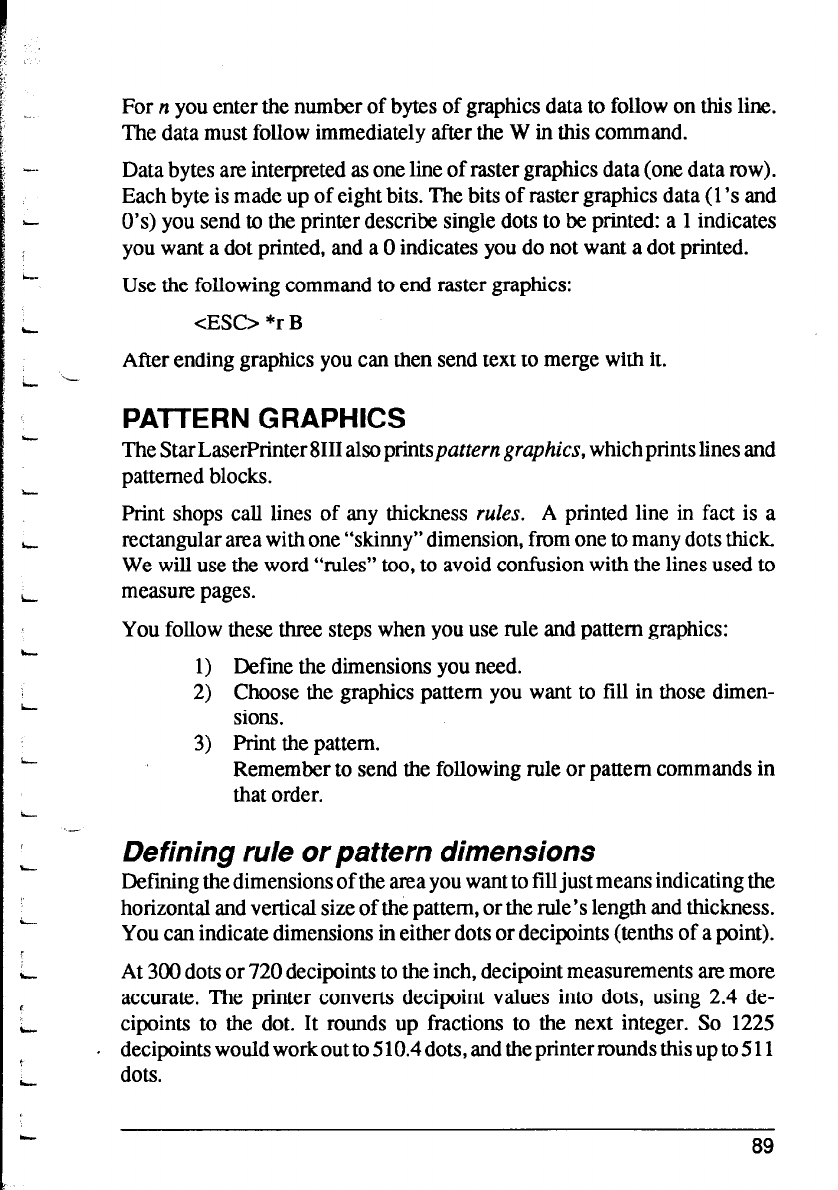
i L
i
L
L
I
L
i
i
L
L..
L
For n you enter the number of bytes of graphics data to follow on this line.
The data must follow immediately after the W in this command.
Data bytes are interpreted as one line of raster graphics data (one data row).
Each byte is made up of eight bits. The bits of raster graphics data (l’s and
O’s) you send to the printer describe single dots to be printed: a 1 indicates
you want a dot printed, and a 0 indicates you do not want a dot printed.
Use the following command to end raster graphics:
<ES0 *r B
After ending graphics you can then send text to merge with it.
PATTERN GRAPHICS
The Star LaserPrinter 8111 also printspattern graphics, which prints lines and
patterned blocks.
Print shops call lines of any thickness rules. A printed line in fact is a
rectangular area with one “skinny” dimension, from one to many dots thick
We will use the word “rules” too, to avoid confusion with the lines used to
measure pages.
You follow these three steps when you use rule and pattern graphics:
1) Define the dimensions you need.
2) Choose the graphics pattern you want to fill in those dimen-
sions.
3) Print the pattern.
Remember to send the following rule or pattern commands in
that order.
Defhing rule or pattern dimensions
Defining the dimensions of the area you want to fill just means indicating the
horizontal and vertical size of the pattern, or the rule’s length and thickness.
You can indicate dimensions in either dots or decipoints (tenths of a point).
At 300 dots or 720 decipoints to the inch, decipoint measurements am more
accurate. The printer converts decipoint values into dots, using 2.4 de-
cipoints to the dot. It rounds up fractions to the next integer. So 1225
decipoints would work out to 510.4 dots, and the printer rounds this up to 5 11
dots.
L
89


















